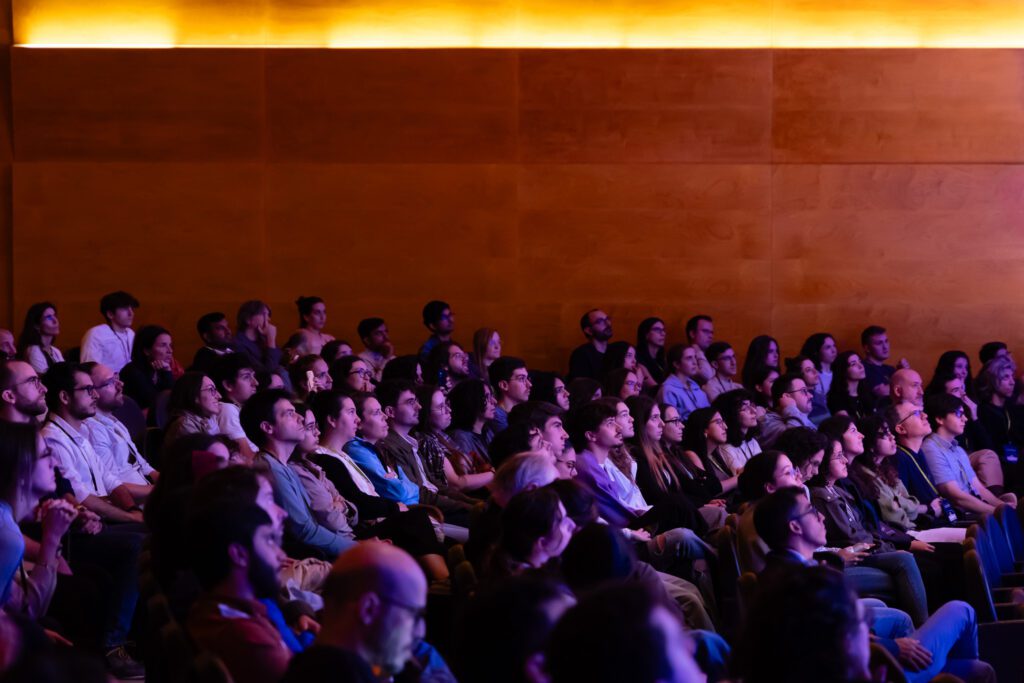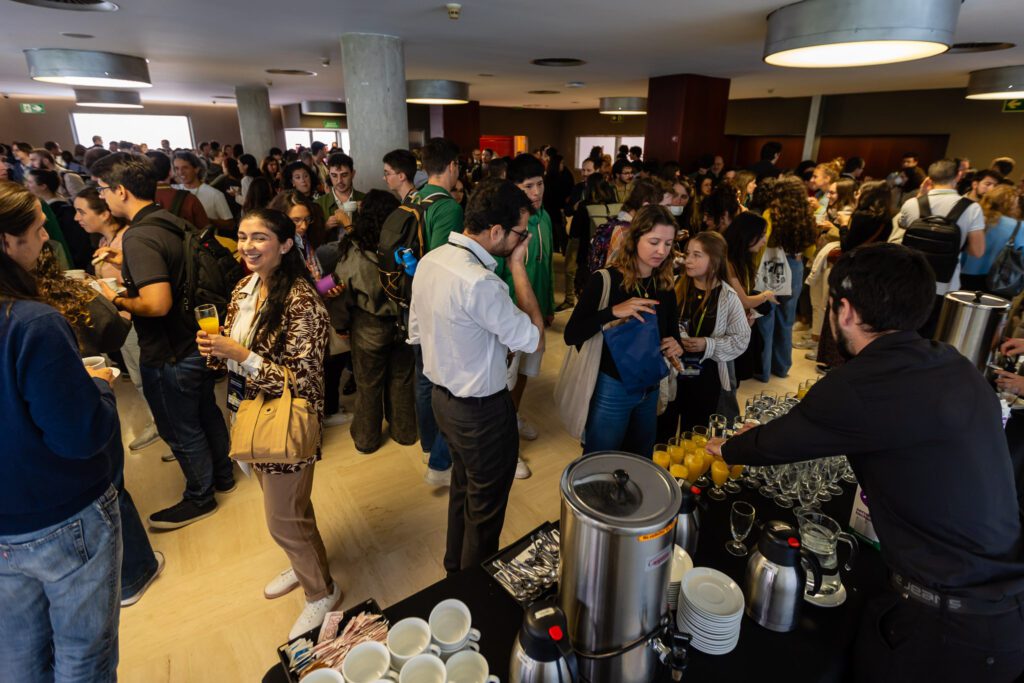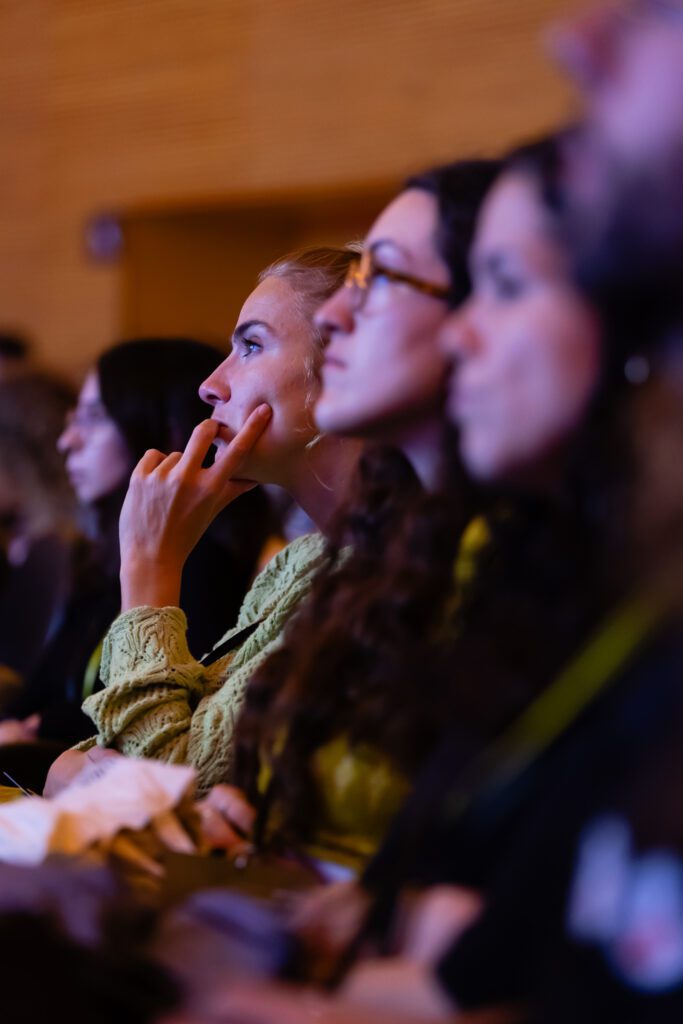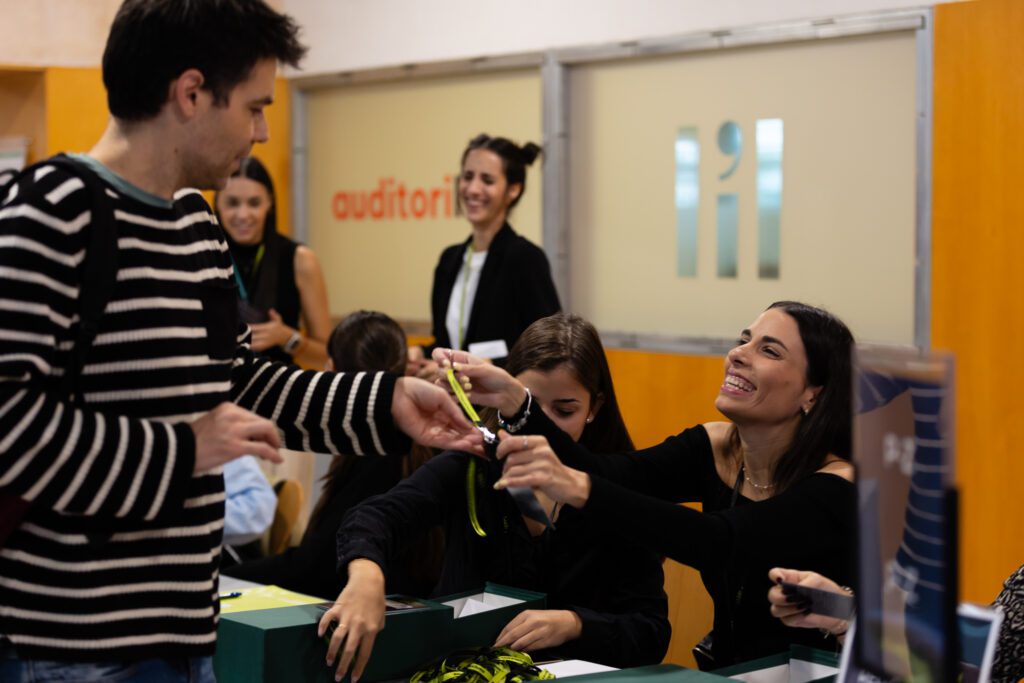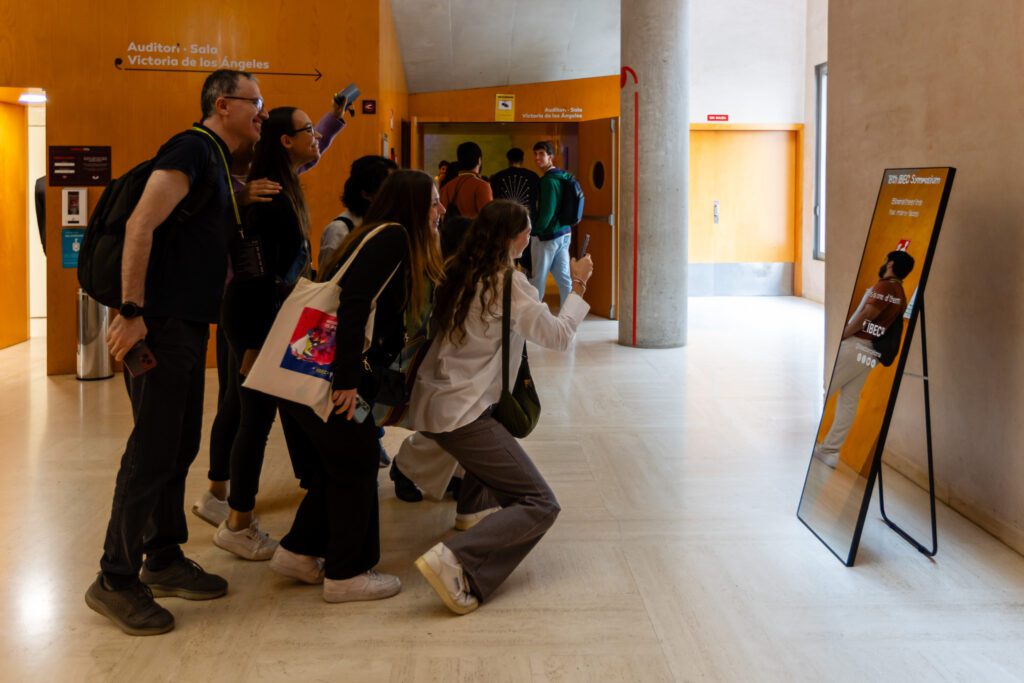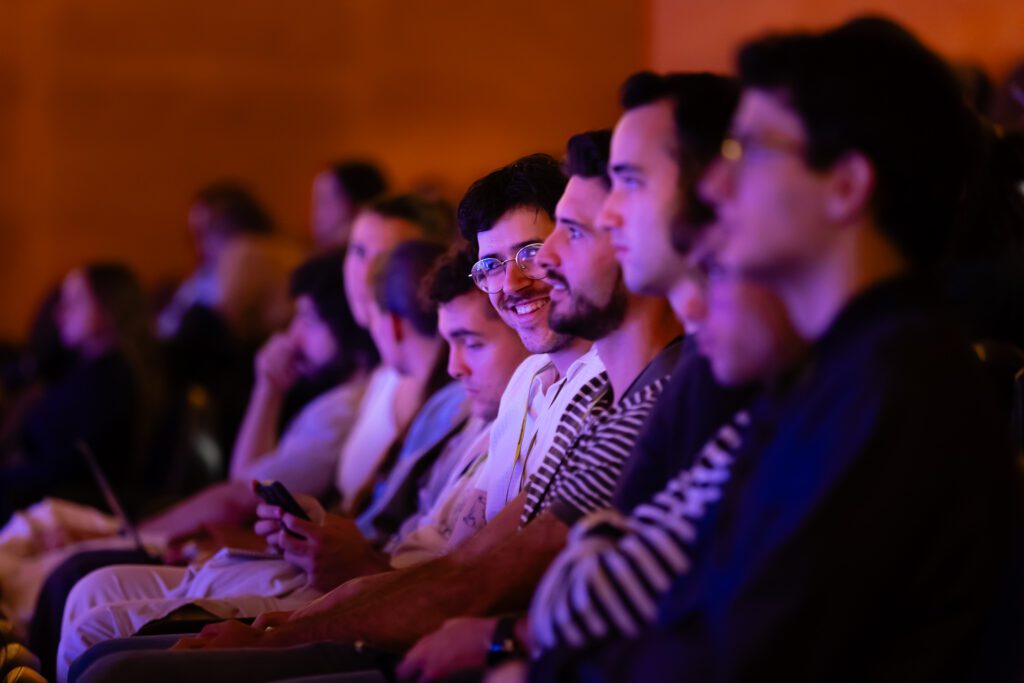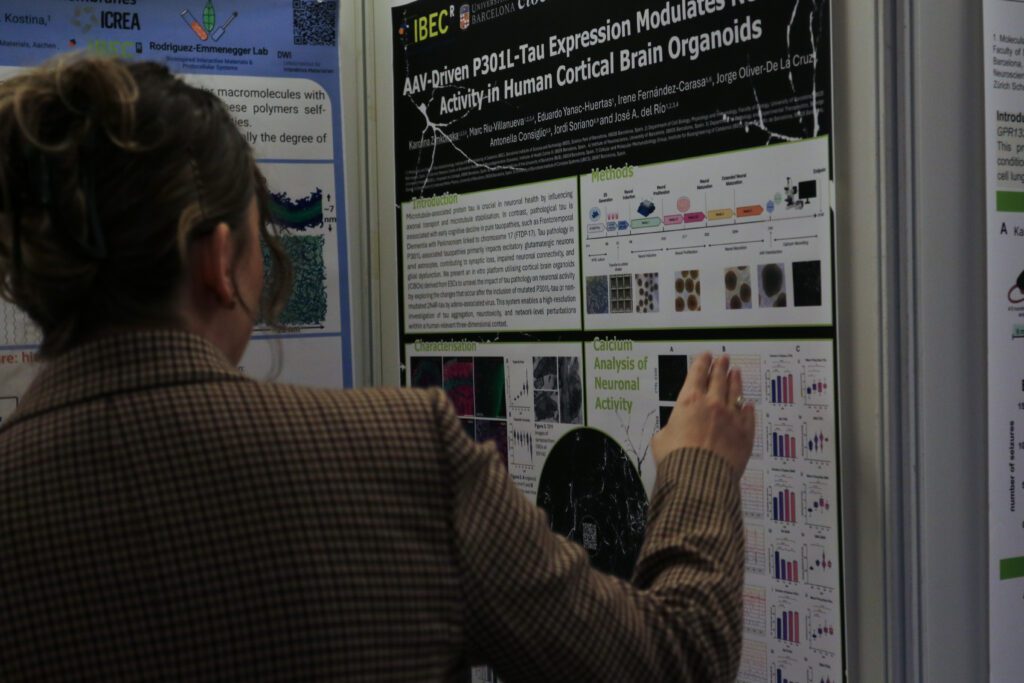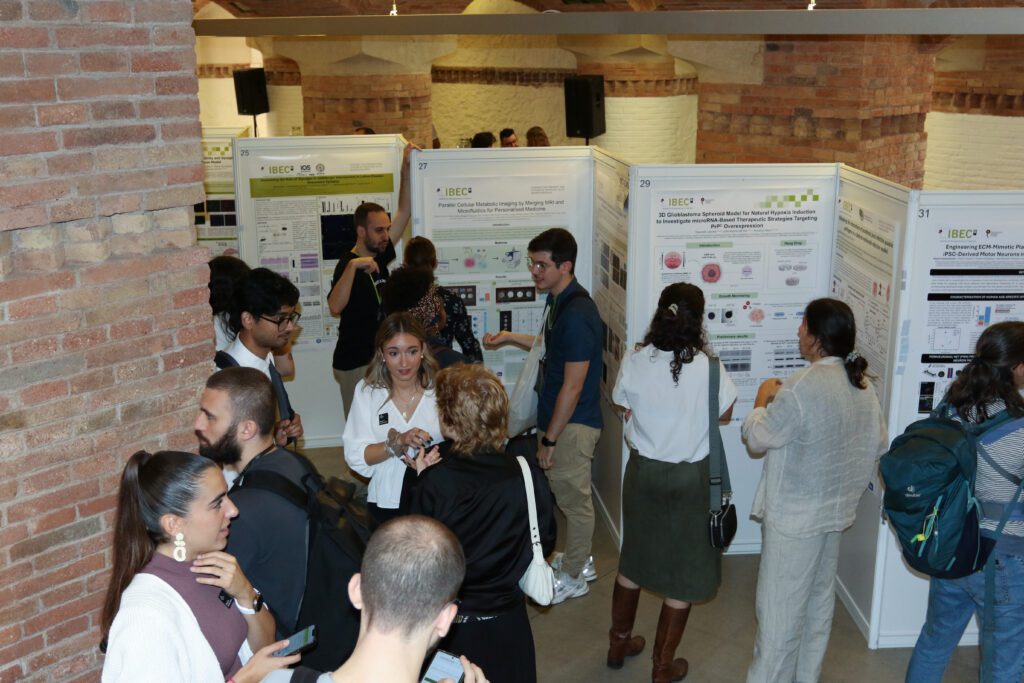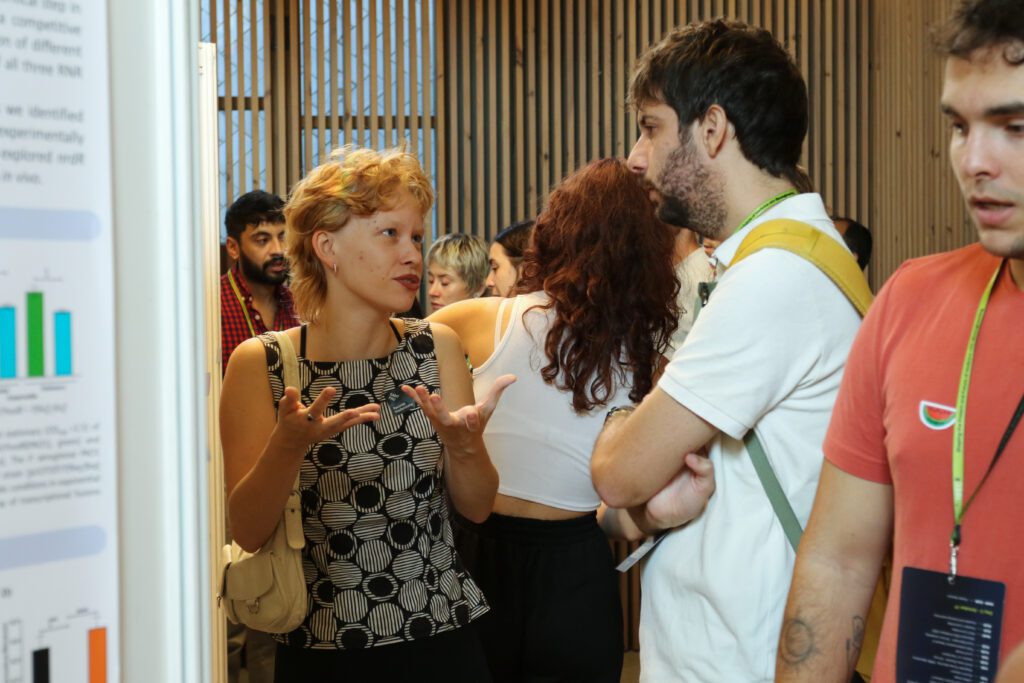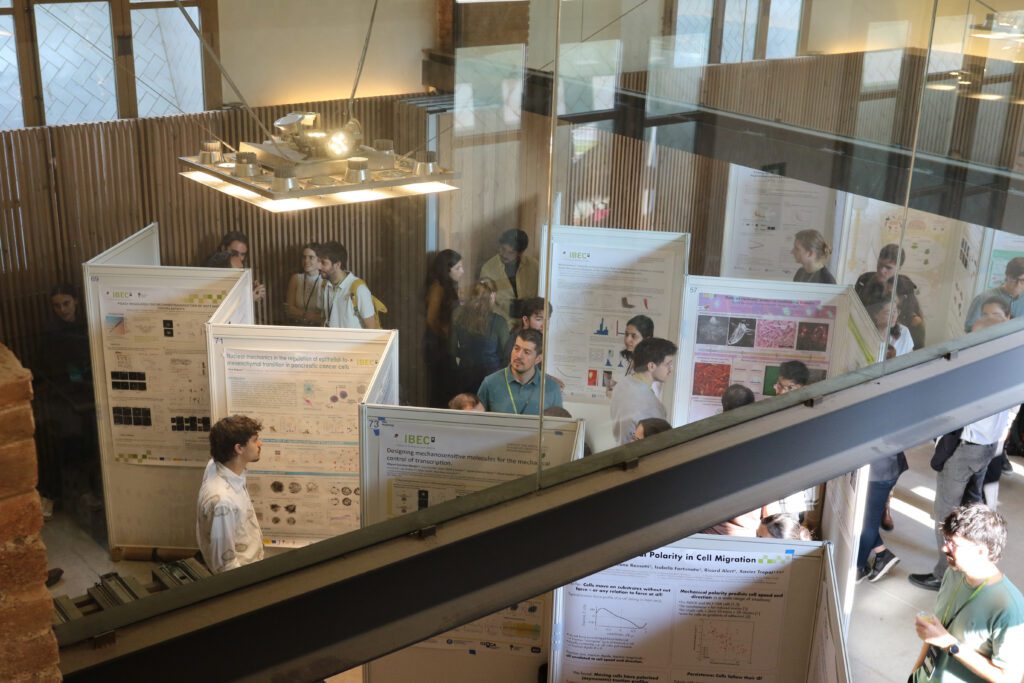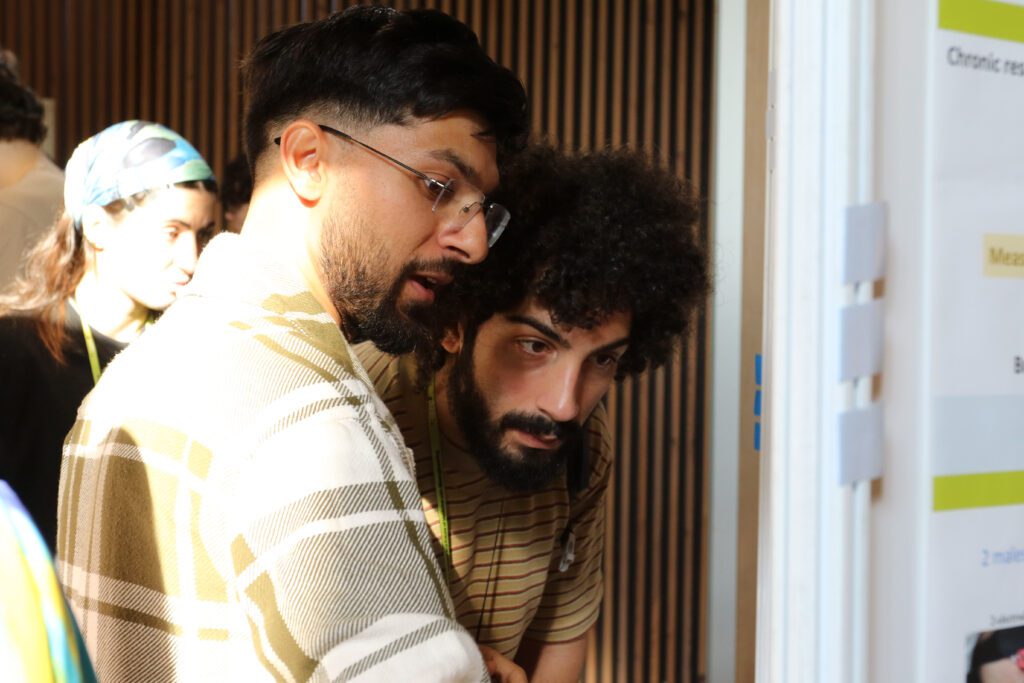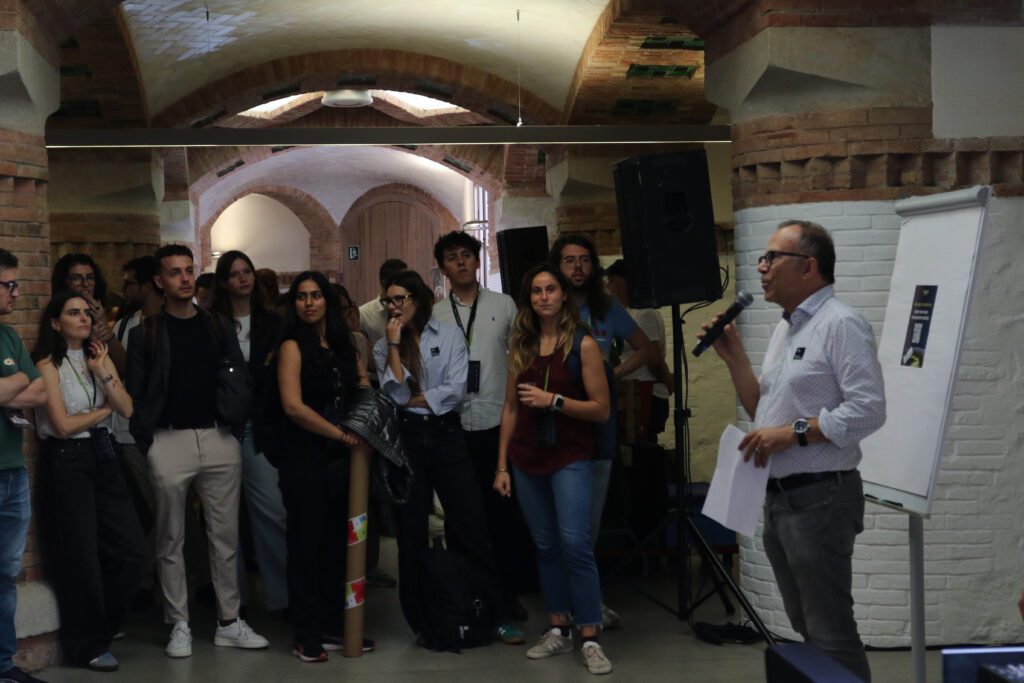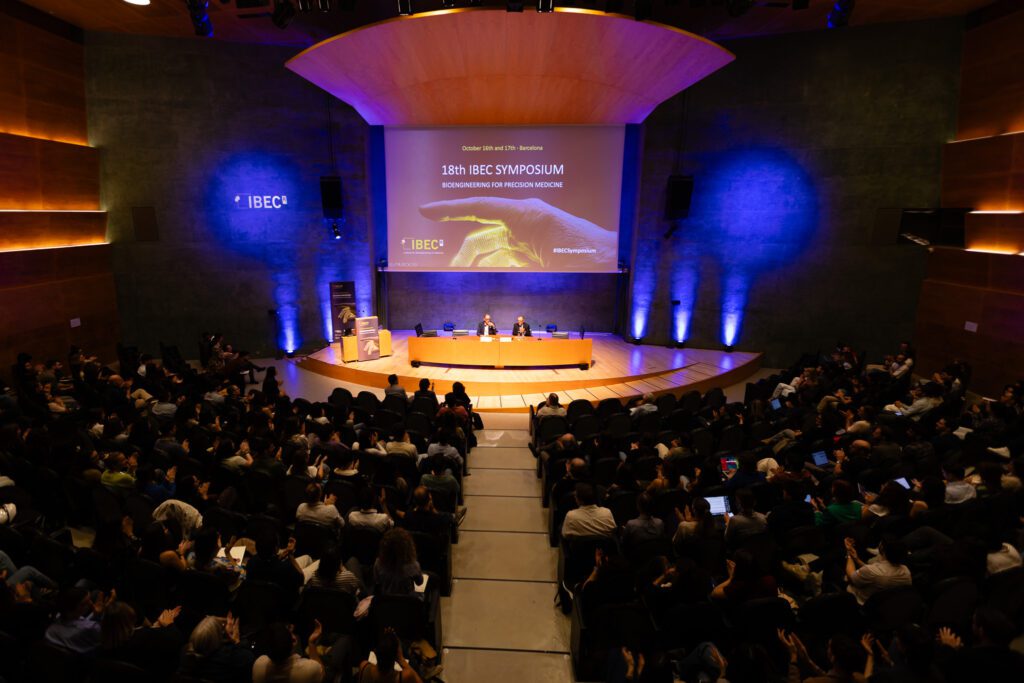The 18th annual IBEC Symposium focused on ‘Bioengineering for Precision Medicine’, which is one of IBEC’s key areas of application. The event was attended by nearly 300 people, including local and international researchers. The multidisciplinary environment provided experts from other centres and the IBEC community with the opportunity to present their projects and exchange knowledge.
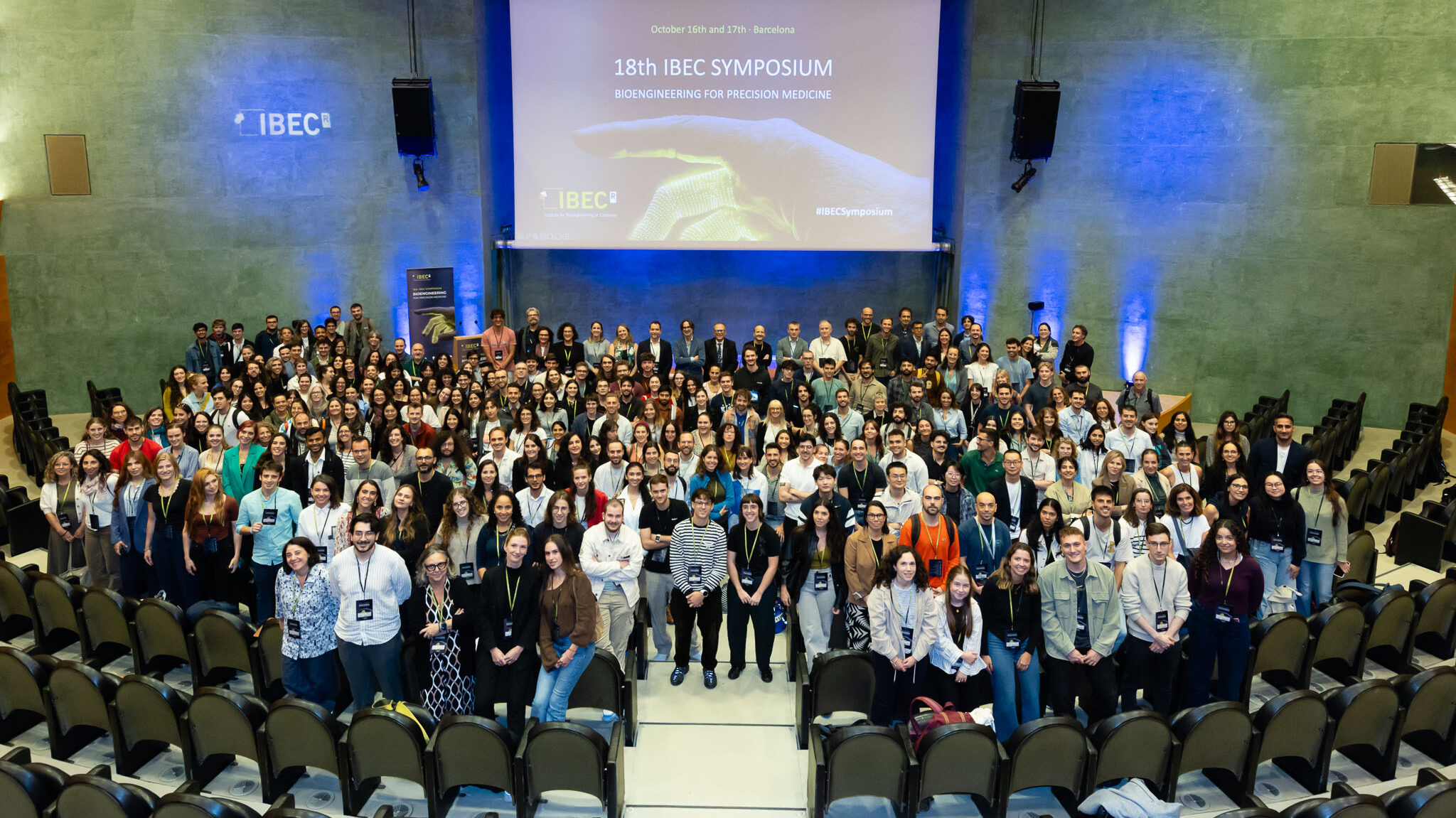
On Thursday, 16 October, the 18th IBEC Symposium took place. Although aimed especially at the IBEC community, the event was open to the entire scientific community and was attended by nearly 300 participants, who were able to learn about the latest developments in bioengineering for precision medicine.
The symposium was hosted by Rohit Nautiyal and Angela María Ramírez Rosales, who are researchers in the IBEC’s Integrative Cell and Tissue Dynamics and Nanobioengineering groups, respectively. The day began with welcomes from representatives of IBEC’s founding institutions: Jordi Garcia, Vice-Rector for Research at the University of Barcelona (UB); and Josep Samitier, IBEC Director.
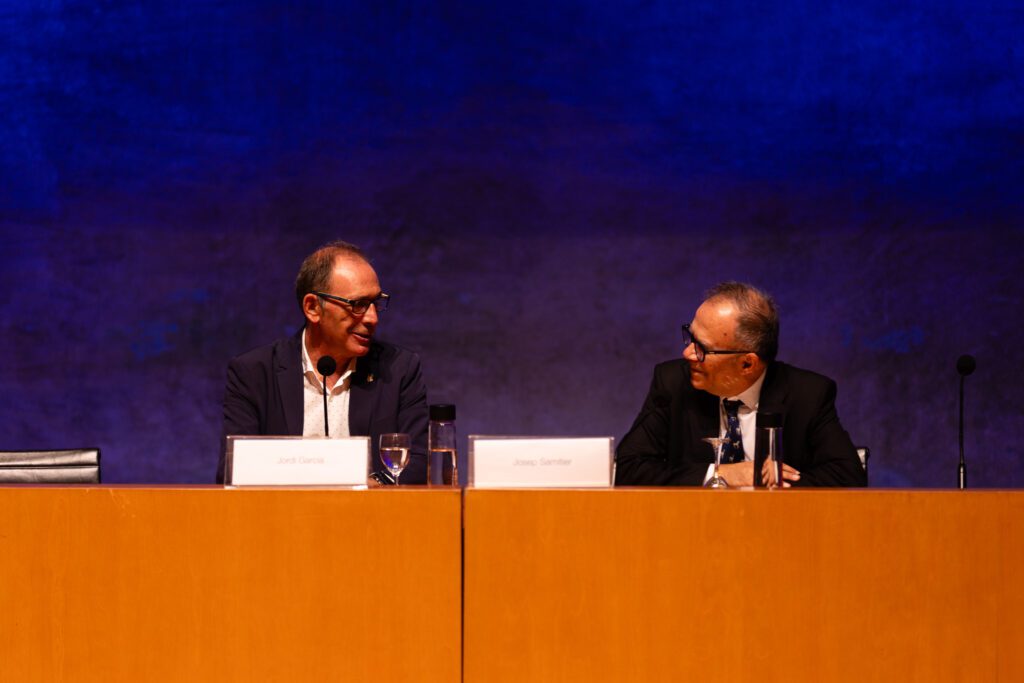
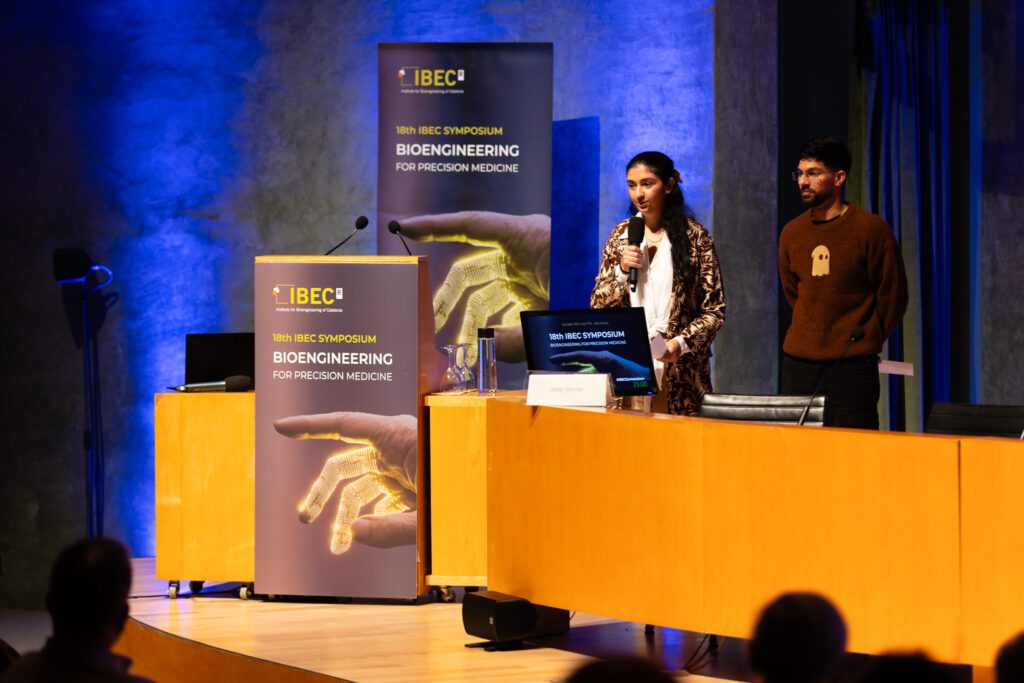
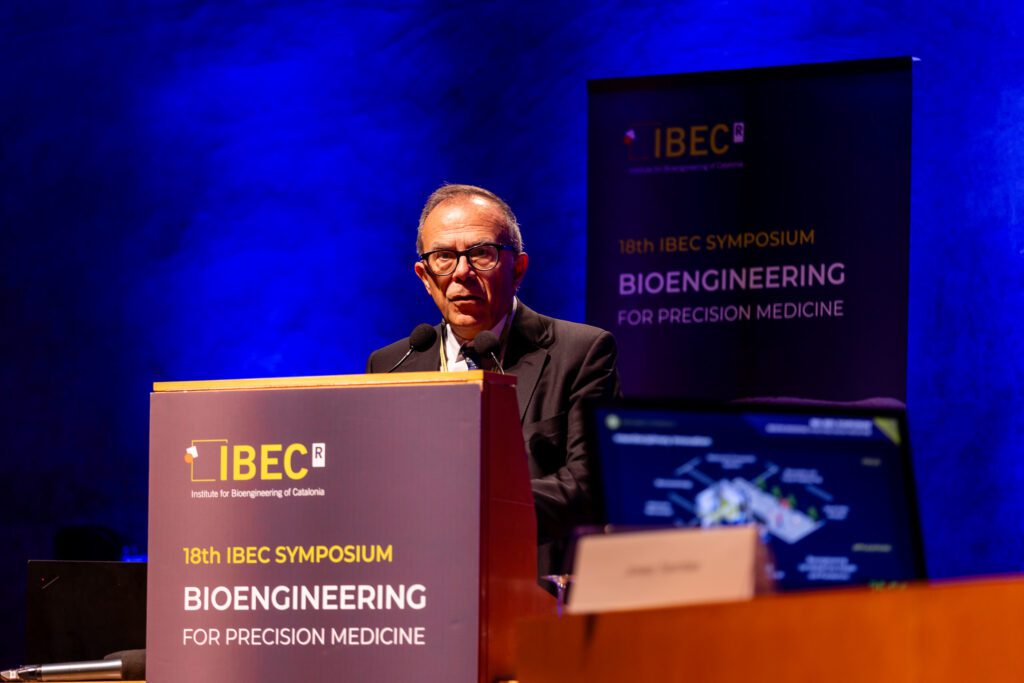
Samitier then began the series of talks with a presentation providing a comprehensive overview of IBEC’s achievements over the past year and its future direction. This reaffirmed the institute’s commitment to excellence in biomedical research and innovation.
Biotechnology for Precision Medicine
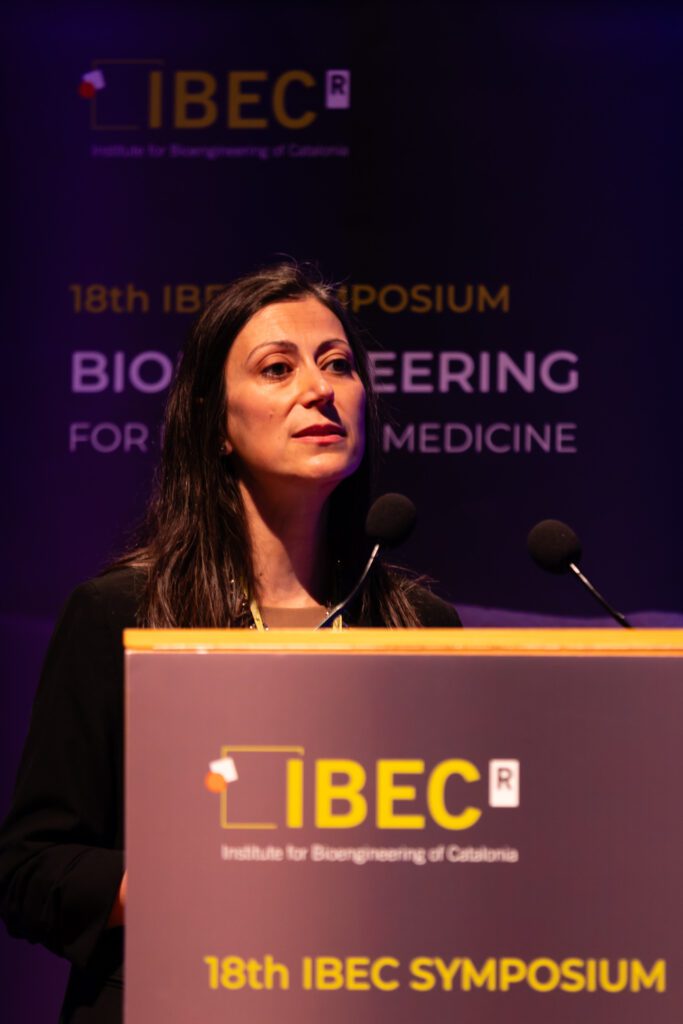
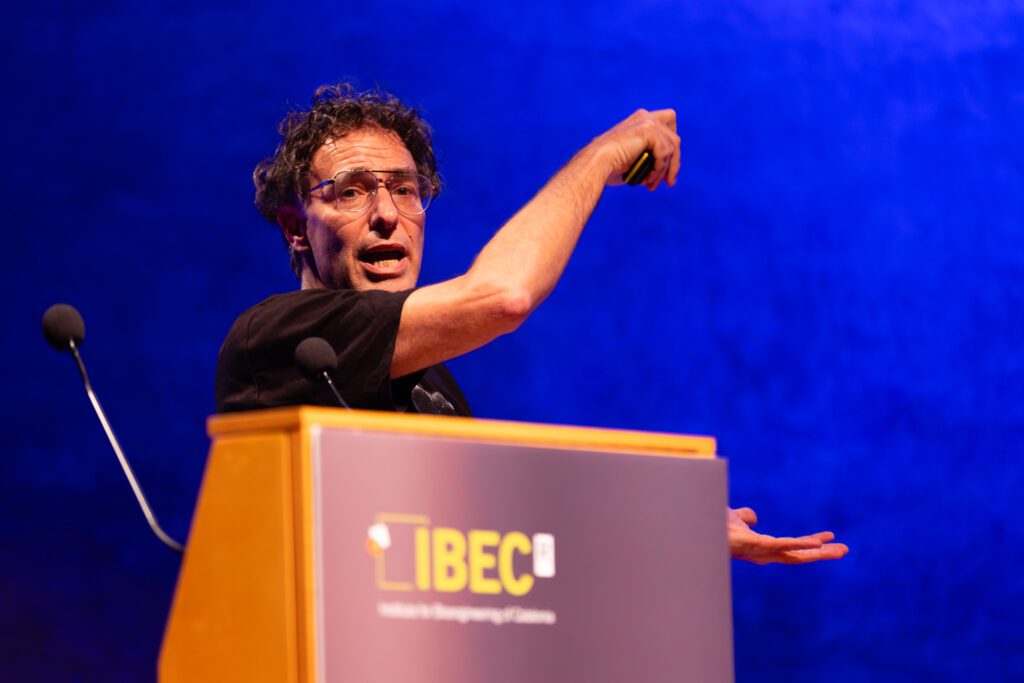
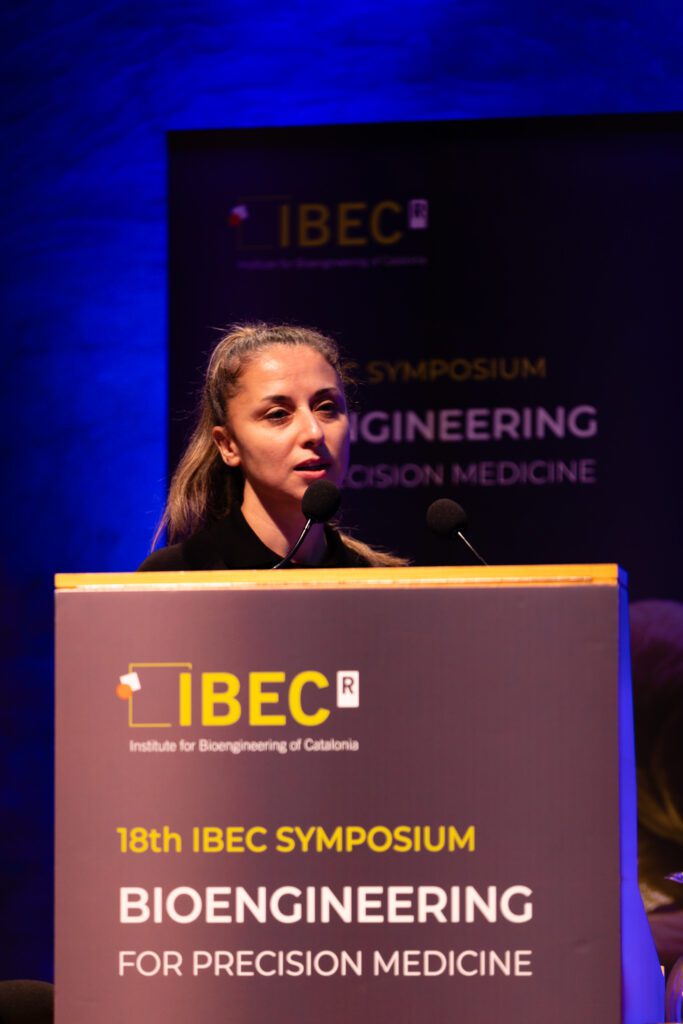
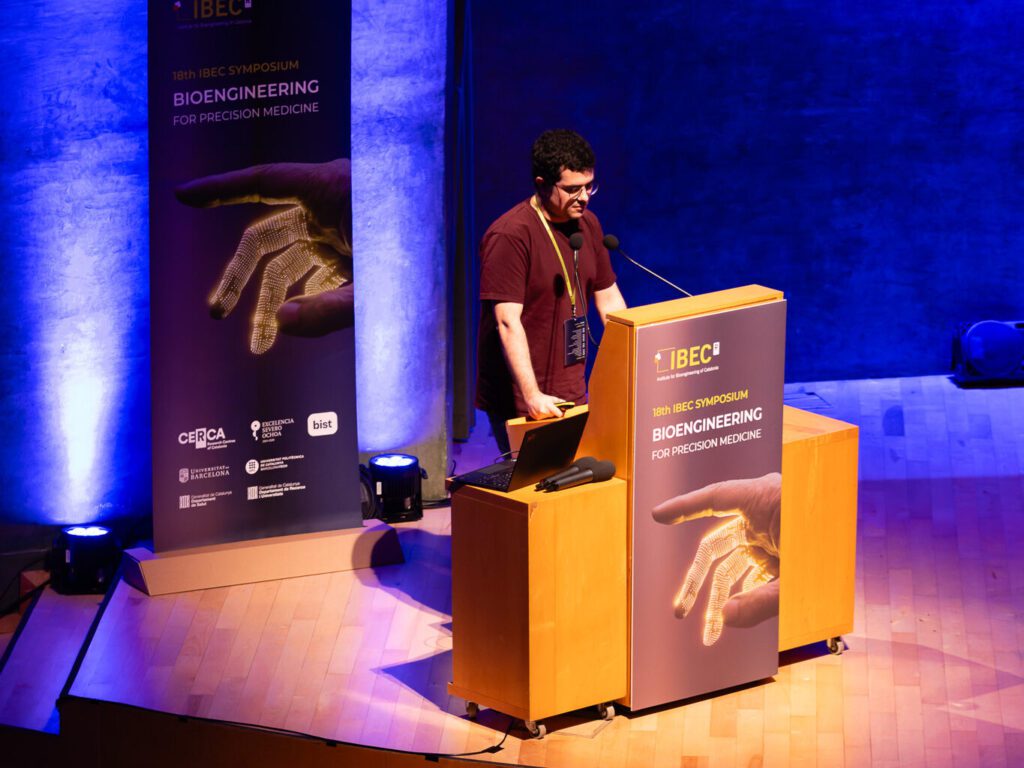
This year, four presentations were given by leading researchers in the field of biotechnology for precision medicine.
The first speaker was Melike Lakadamyali, Professor of Physiology at the University of Pennsylvania. She presented her work on how super-resolution microscopy reveals the dynamic organisation of chromatin and its response to chemical and mechanical stimuli. She explained how, through quantitative analysis and machine learning, her team had demonstrated that the structure of chromatin enables us to distinguish between different cellular states and to better understand how they are regulated.
Next was Alejandro Torres-Sánchez, an IBEC alumnus and current group leader at EMBL Barcelona. During his presentation, Torres spoke about computational modelling as a tool for understanding how cells and tissues respond to mechanical stimuli. Using cardiac morphogenesis and malaria parasite adhesion as examples, he demonstrated how these models can predict and explain complex biological behaviours that are difficult to observe directly.
Evrim Acar Ataman, a research professor and the head of the Department of Data Science and Knowledge Discovery at the Simula Metropolitan Centre for Digital Engineering in Oslo, then explained how coupled tensor factorisations enable complex, multimodal data — such as that from metabolomic or neuroimaging studies — to be analysed jointly and comprehensively. These techniques integrate prior information and computational models to identify interpretable patterns, improve our understanding of biological systems, and facilitate the discovery of dynamic biomarkers and diagnostics.
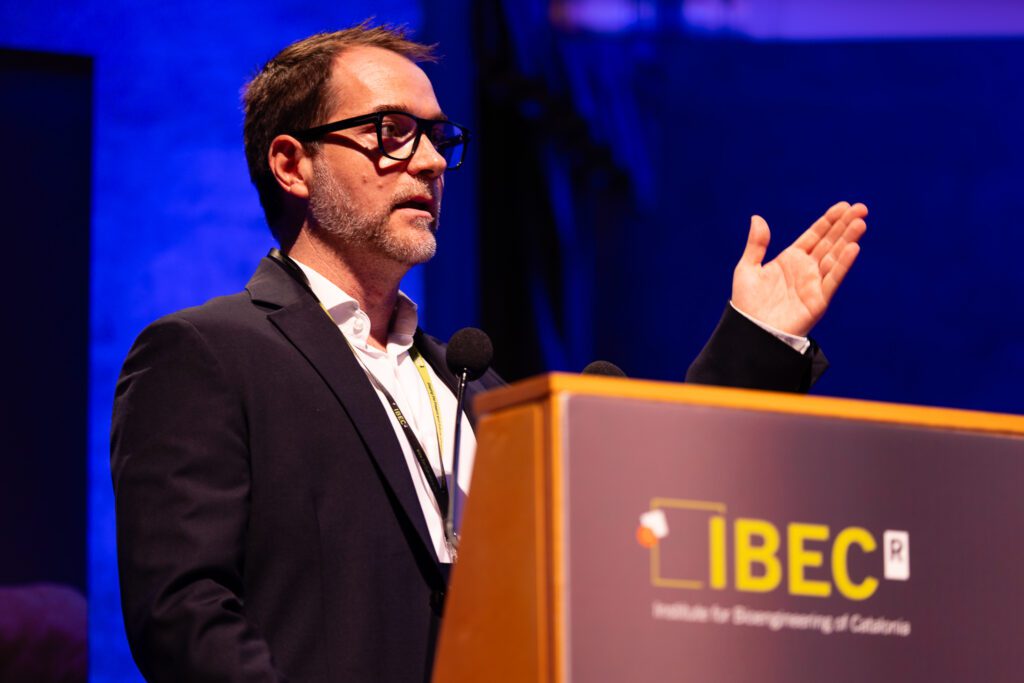
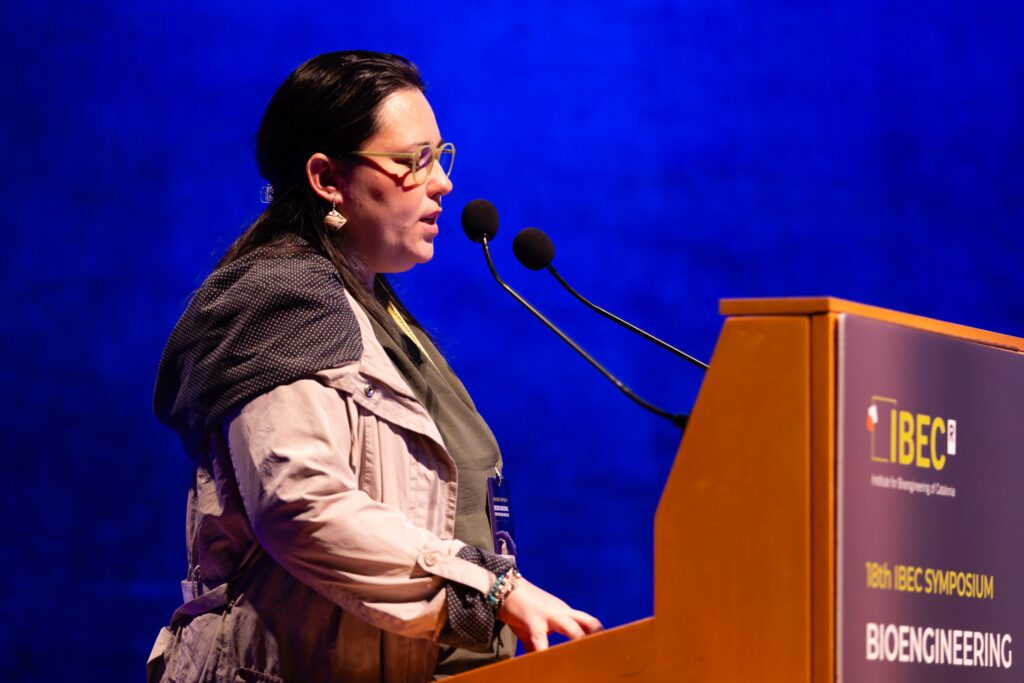
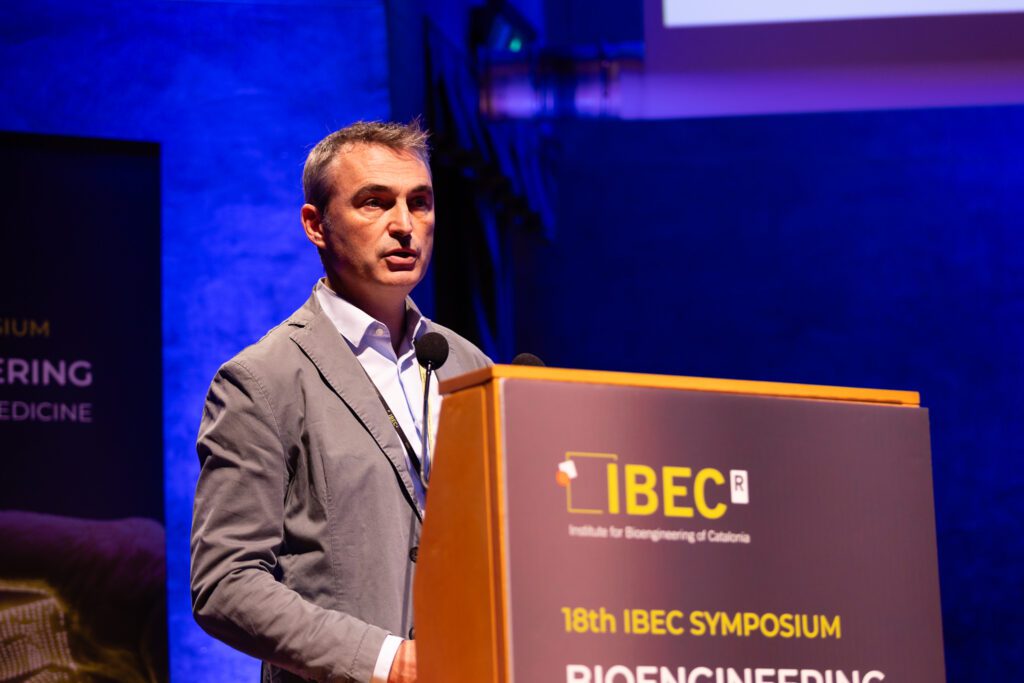
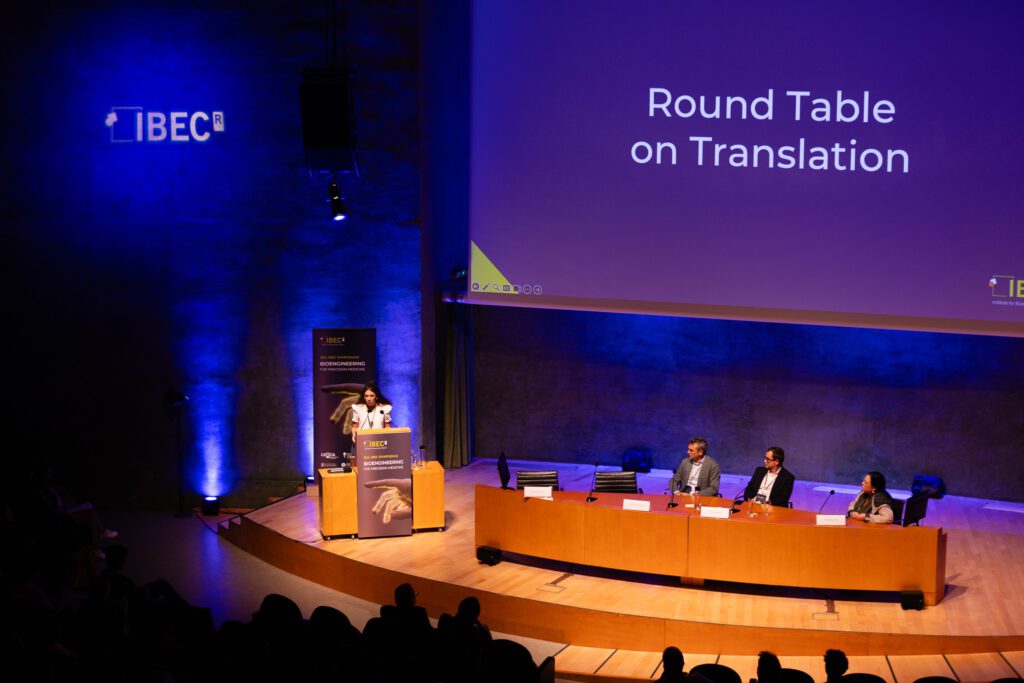
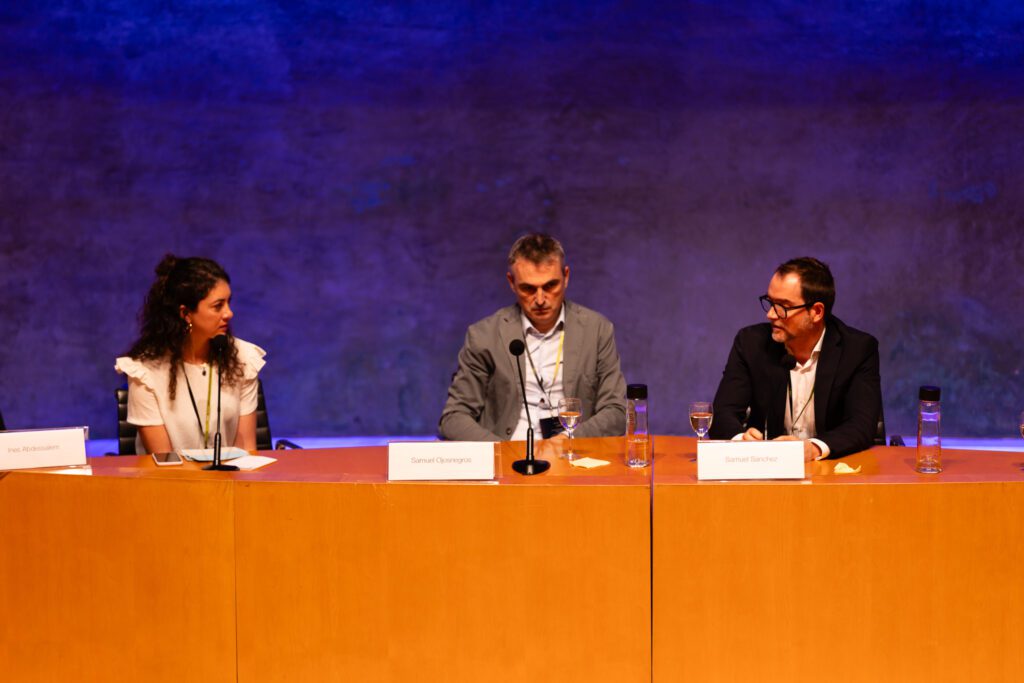
This was followed by a translation session, featuring a roundtable discussion with three IBEC researchers who shared their experiences of setting up spin-off companies: Maria Alejandra Ortega Machuca (senior researcher of the Molecular Imaging for Precision Medicine group and founder of Vitala Technologies), Samuel Ojosnegros (leader of the Bioengineering for Reproductive Health group and founder of Lumiris Spectral Solutions), and Samuel Sánchez (leader of the Smart Nano-Bio-Devices group and founder of Nanobots Therapeutics).
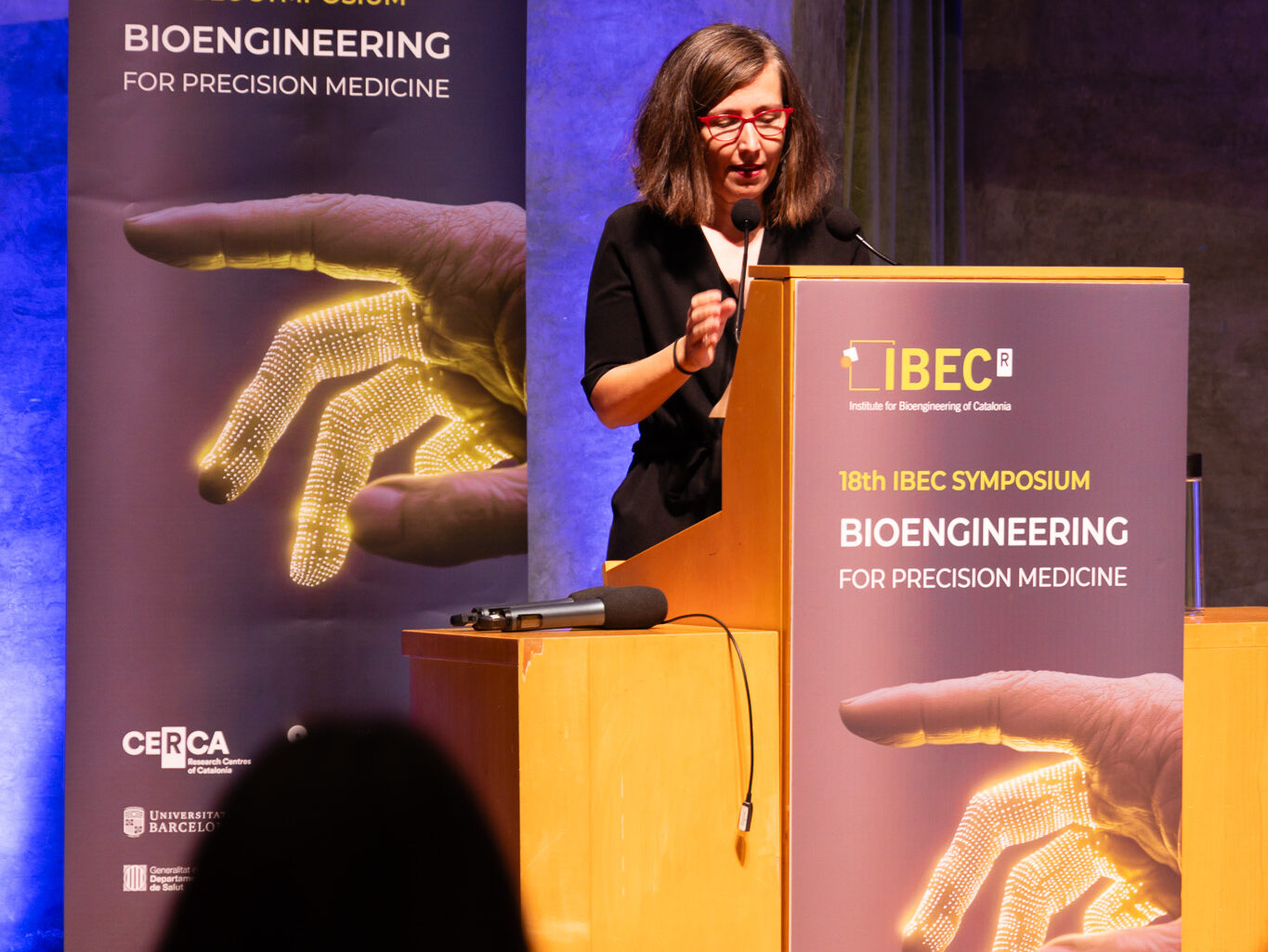
The fourth and final presentation was given by Yuval Ebenstein, a professor at Tel Aviv University’s School of Chemistry. He presented tools for analysing epigenetic modifications of DNA at the level of individual cells and molecules, demonstrating how these techniques can provide important information for clinical cancer research and the development of DNA chips for use in biotechnology.
Teresa Sanchis, Director General of Research at the Department of Research and Universities of the Government of Catalonia, closed the event.
Recognition for work accomplished
The day ended with an awards ceremony.
In line with IBEC’s ongoing commitment to sustainability, seven of its laboratories were awarded My Green Lab certification in recognition of their sustainable laboratory practices: Bacterial Infections: Antimicrobial Therapies, Bioengineering in Reproductive Health, Biomaterials for Neural Regeneration, Biomaterials for Regenerative Therapies, Biomimetic Systems for Cell Engineering, Protein Phase Transitions in Health and Disease, Smart Nano-Bio-Devices. All of these laboratories completed the My Green Lab certification process this year, achieving the highest rating: Green Level.
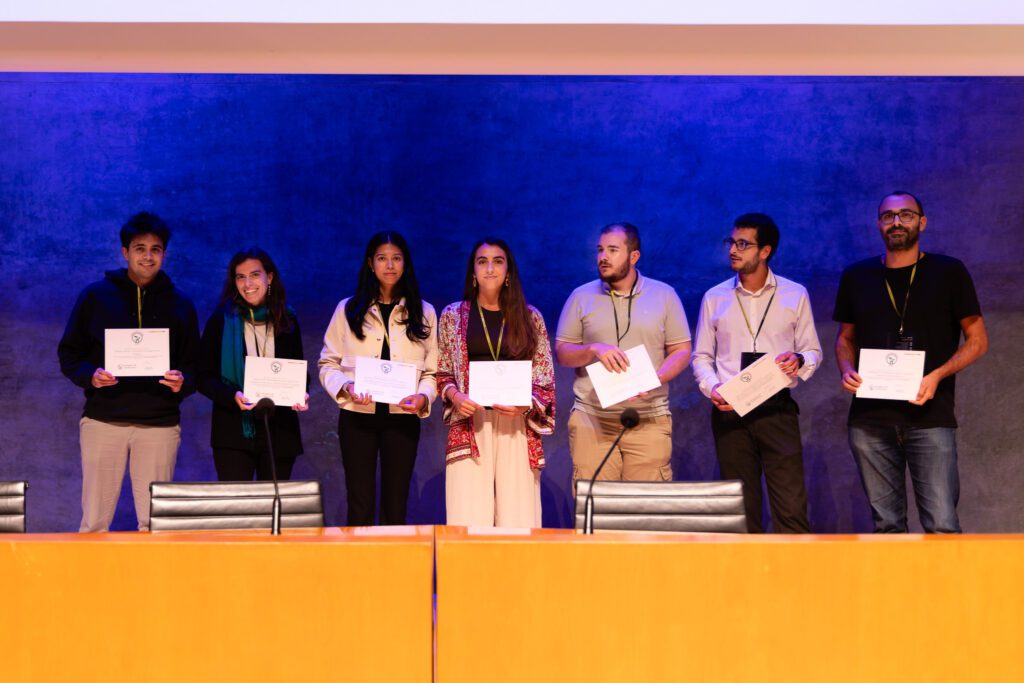
In addition, three doctoral students were recognised for their good work with Doctoral Excellence Certificates: Alba Herrero from the Molecular Imaging for Precision Medicine group; Angela Cirulli from the Biomimetic Systems for Cell Engineering group; and Luisa Camerin from the Nanoprobes and Nanoswitches group.
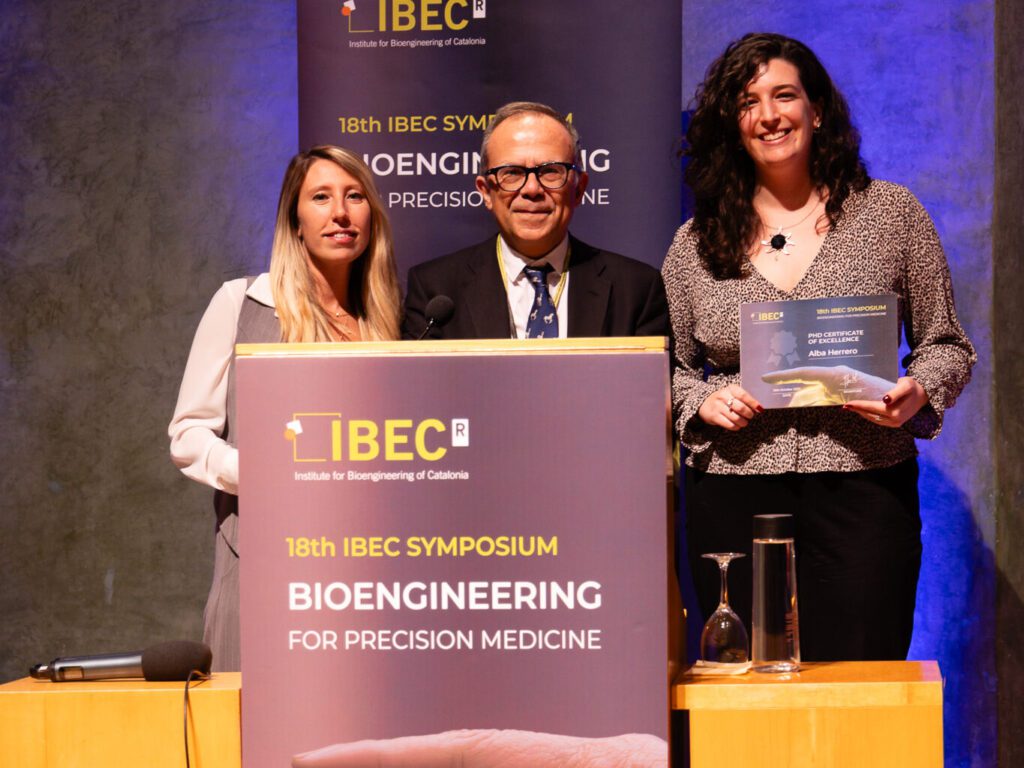
Finally, Júlia Alcàcer Almansa, a predoctoral researcher in the Bacterial Infections: Antimicrobial Therapies group led by Eduard Torrents Serra, won the ‘Best Flash Presentation Award’. During flash presentations, IBEC scientists have the opportunity to present their research to the public in five minutes. There were 18 talks this year, with Alcàcer’s focusing on ‘Burkholderia cenocepacia and Pseudomonas aeruginosa in dual-species models: Insights into population distribution, antibiotic susceptibility, and virulence’.
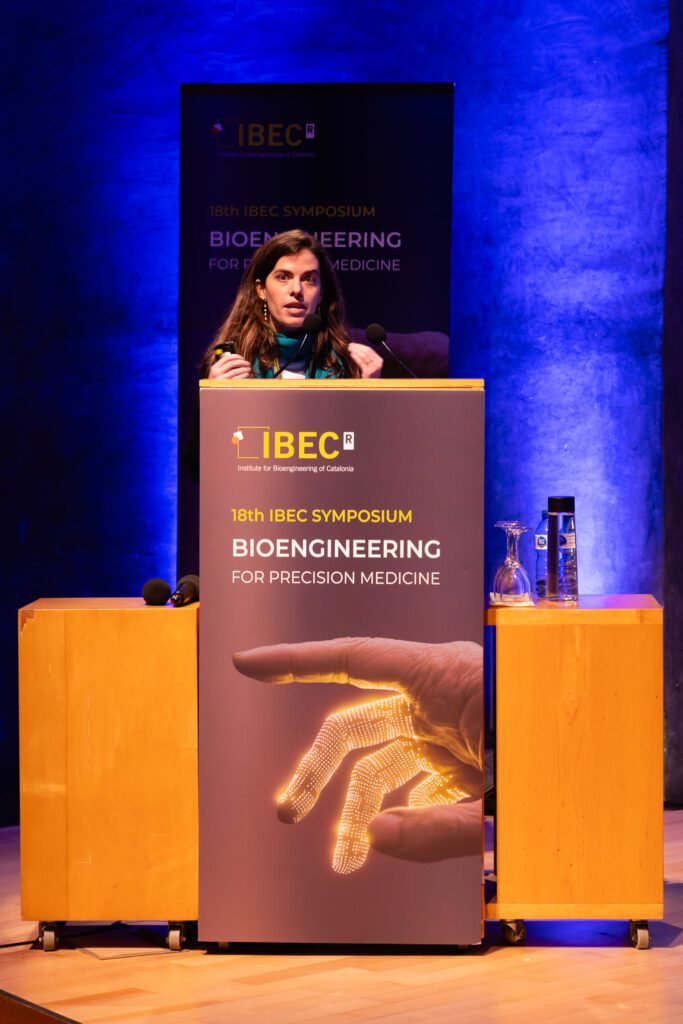
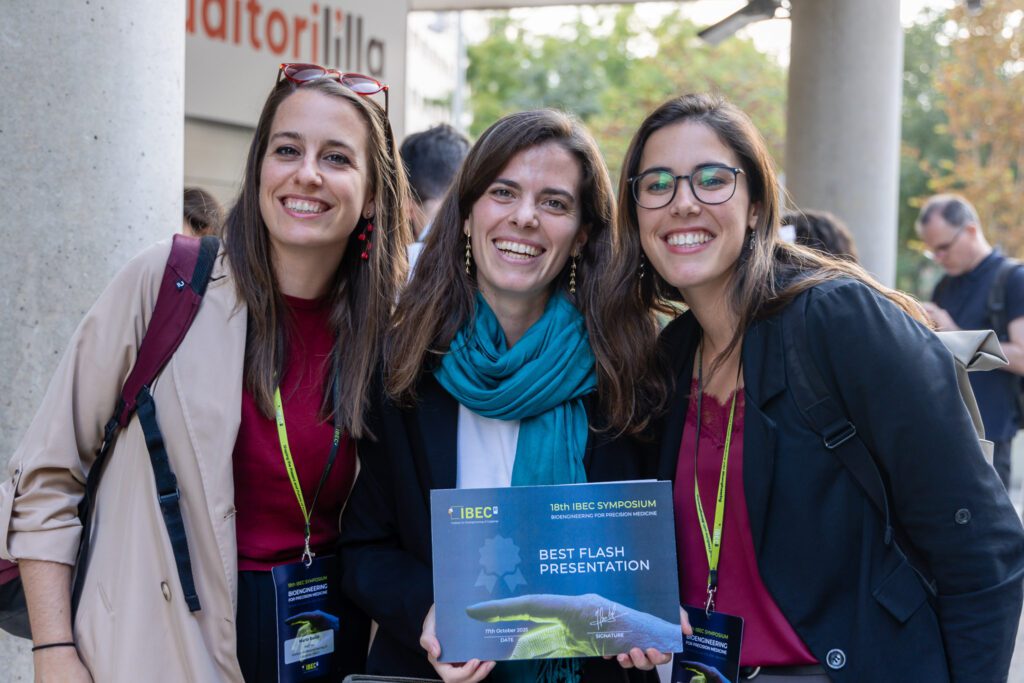
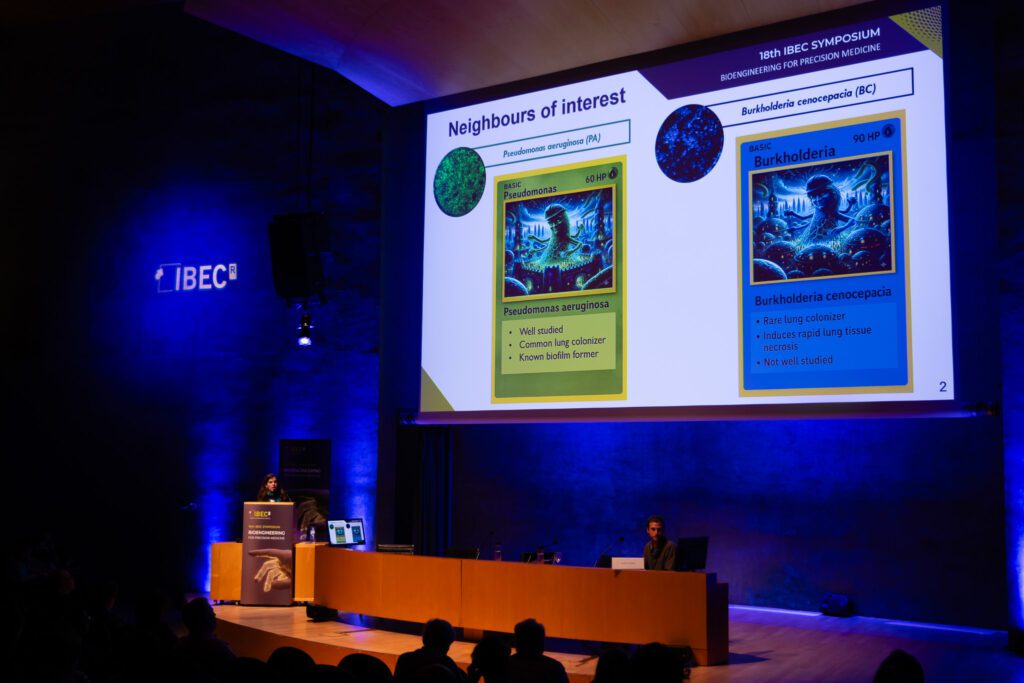
Friday 17th was the second and final day of the symposium. This time held at the Sant Pau Art Nouveau Site, the day focused on the poster session, an activity that has been a part of the symposium since its inception, encouraging connections between researchers.
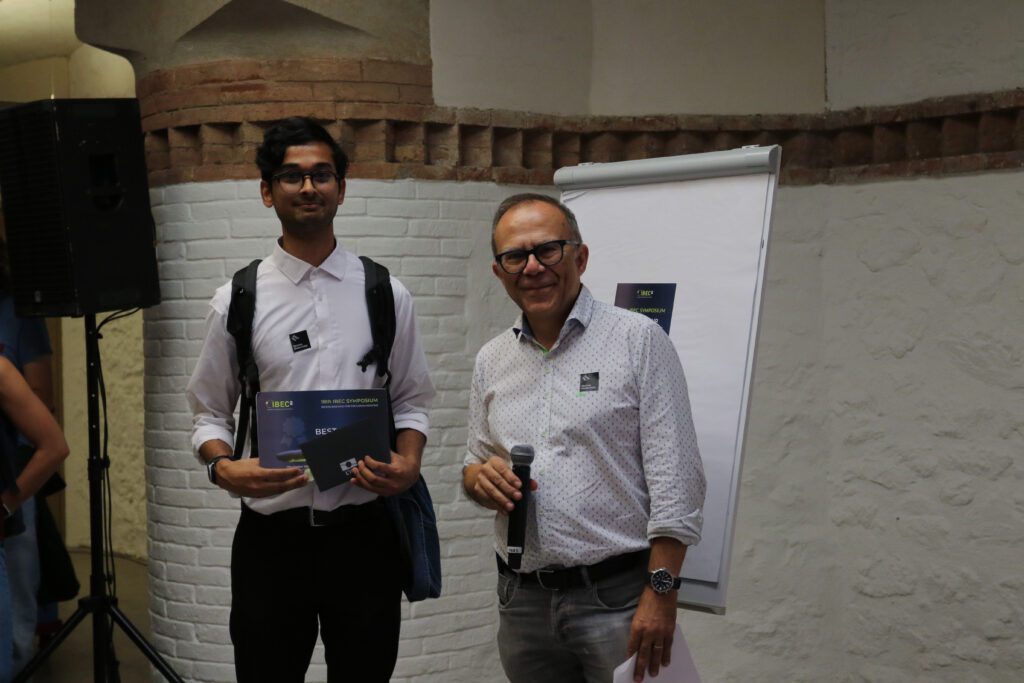
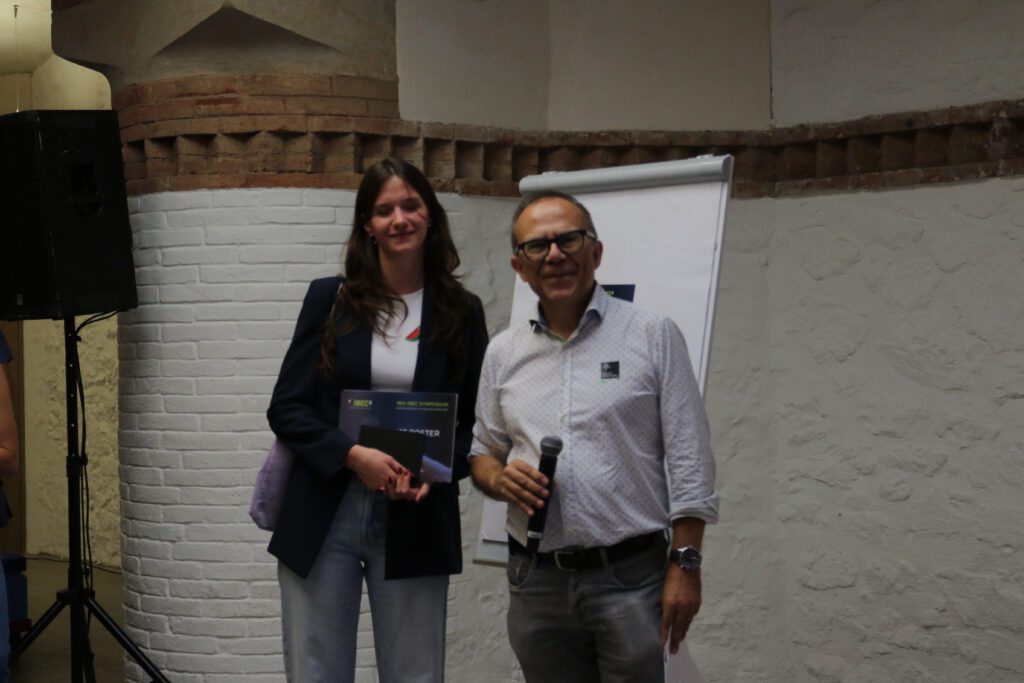
Of the more than 100 posters presented, Palash Chandravanshi, a postdoctoral researcher in IBEC’s Biomaterials for Neural Regeneration group led by Zaida Álvarez Pinto, won the award for best poster. The title of his poster was ‘Engineering ECM-Mimetic Platforms for Functional Maturation of iPSC-Derived Motor Neurons in 3D Printed Spinal Cord Constructs’.
Tiziana Russo, a predoctoral researcher in IBEC’s Bioinspired Interactive Materials and Protocellular Systems group, led by César Rodríguez-Emmeneguerra, won the award for second best poster for her work entitled ‘A LEGO® like approach to i-combisomes origami’.
